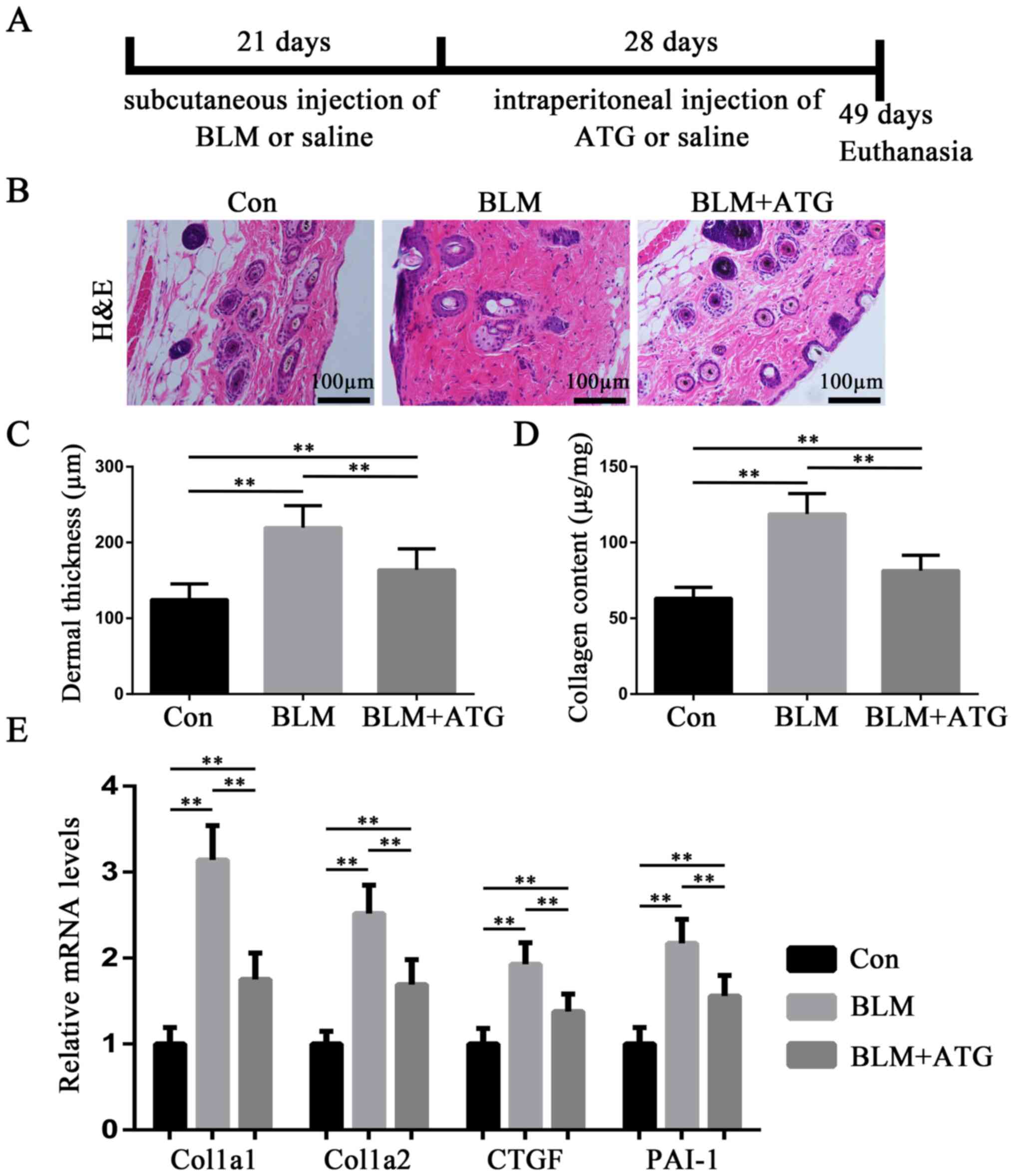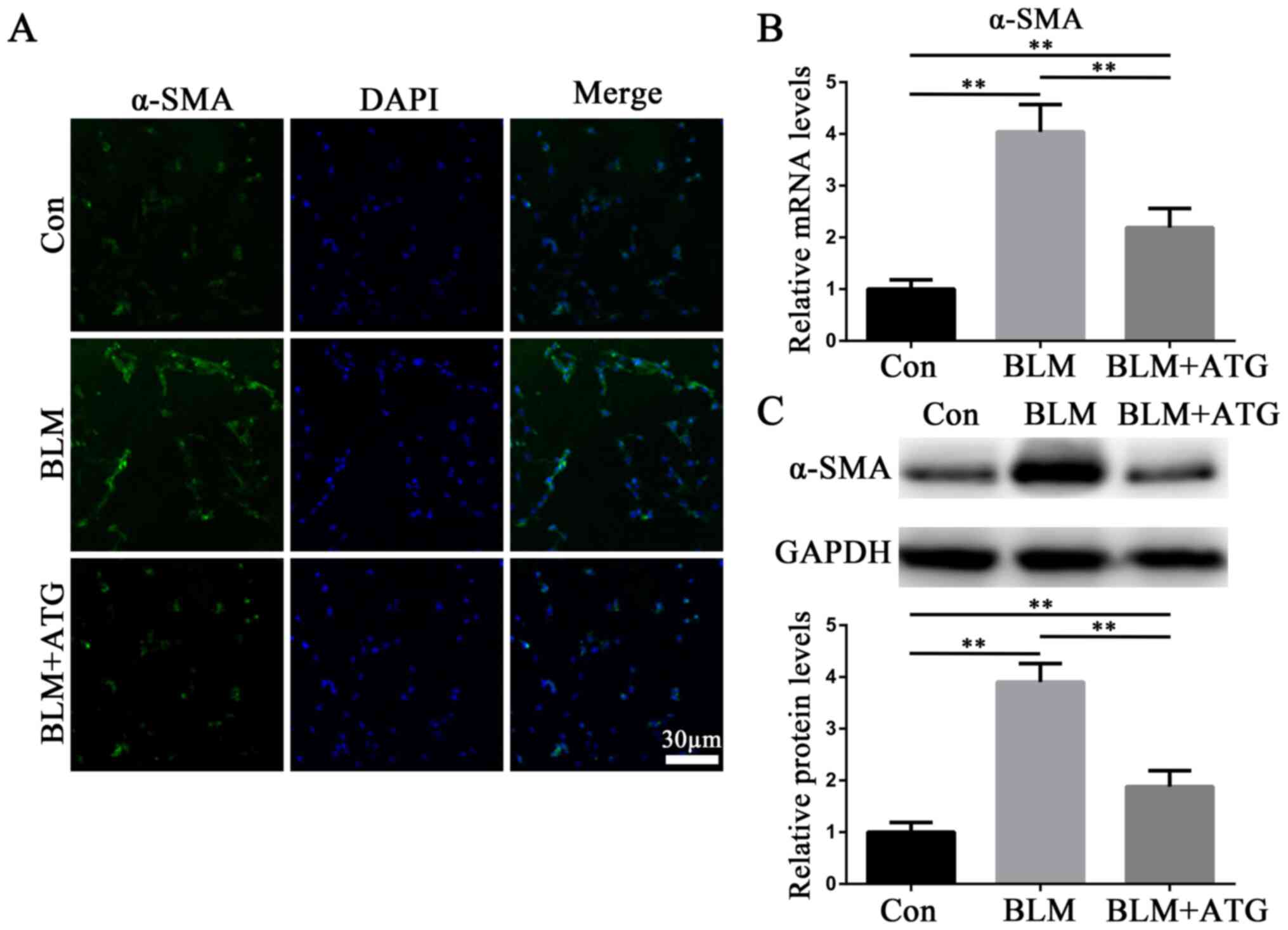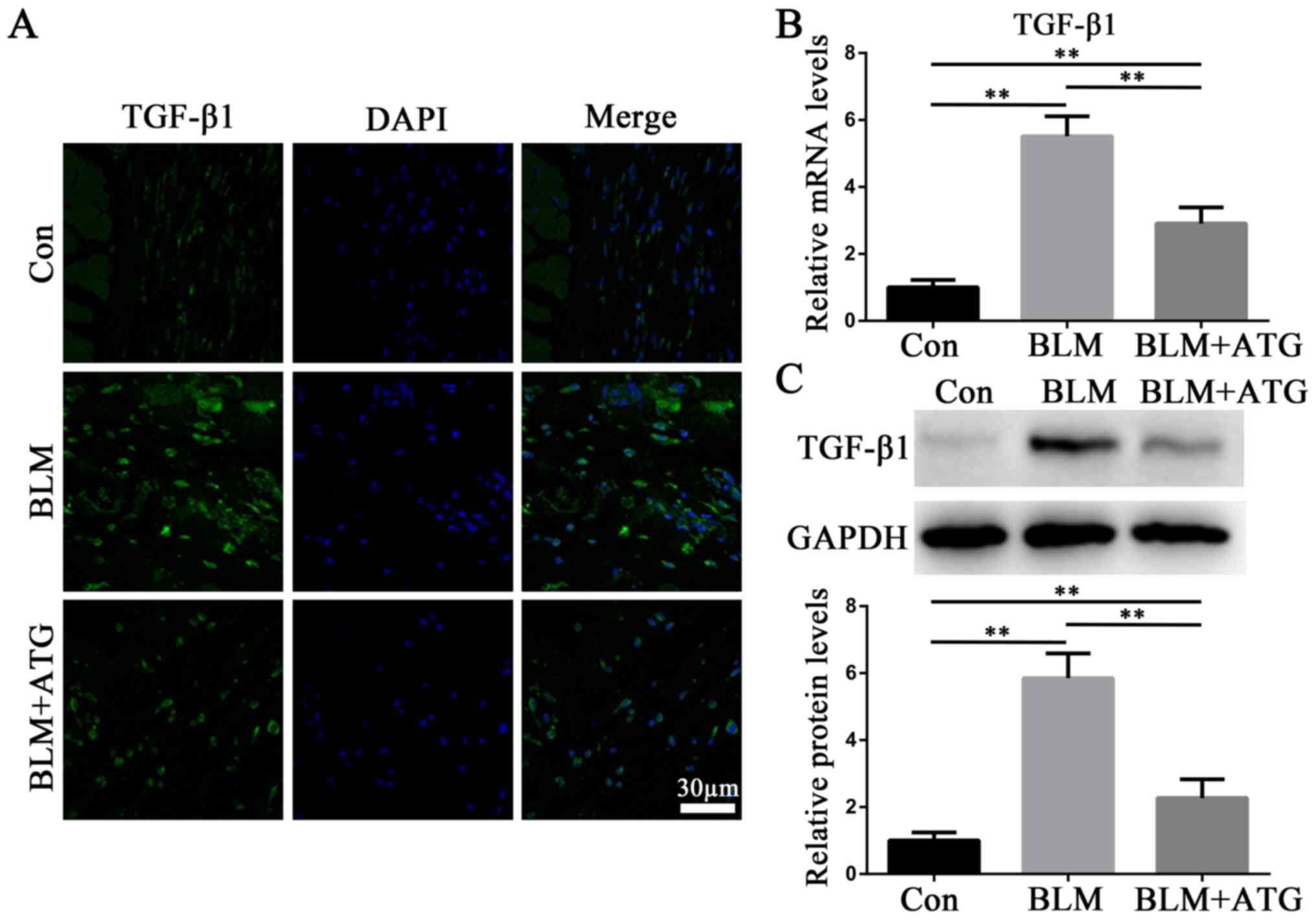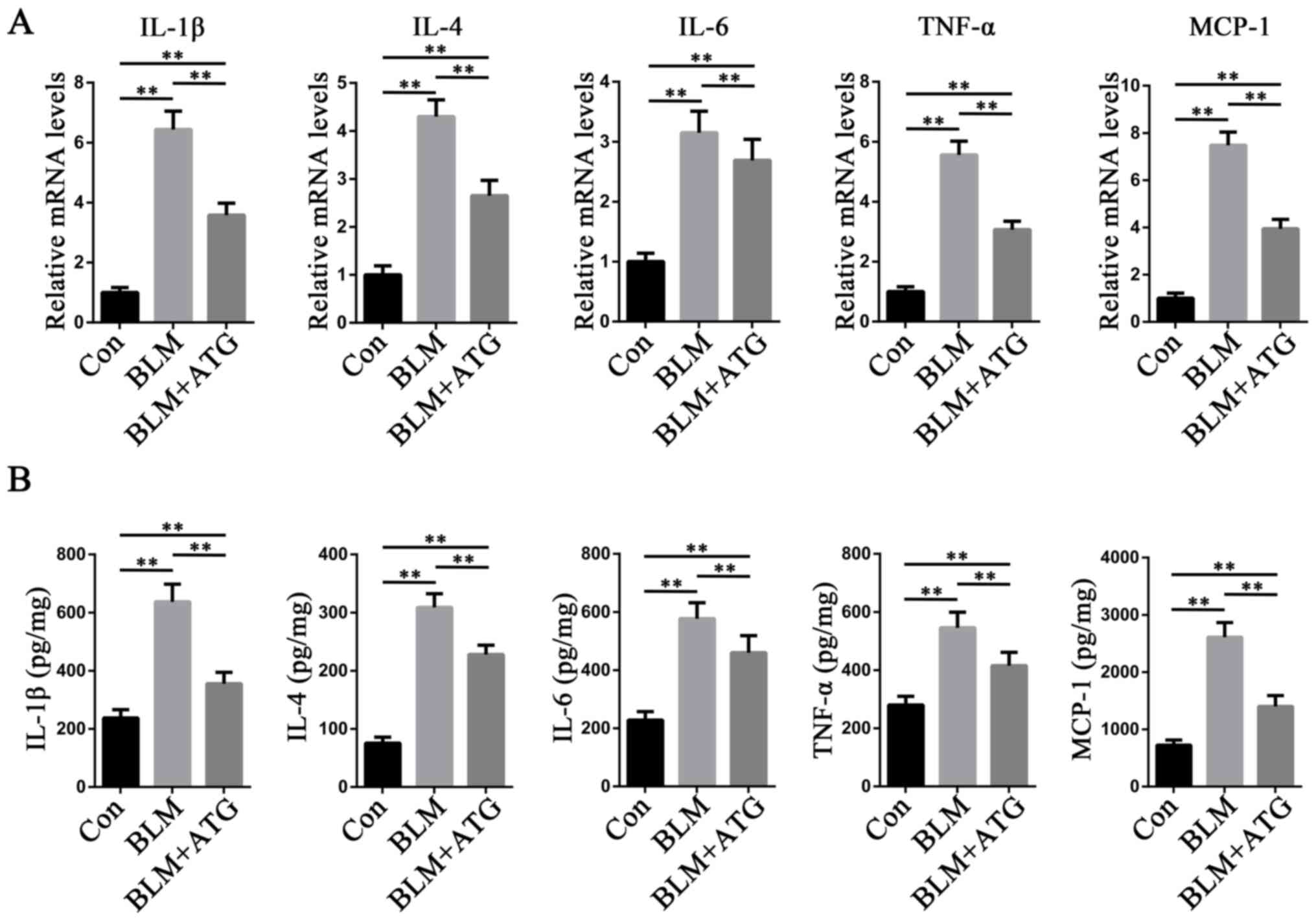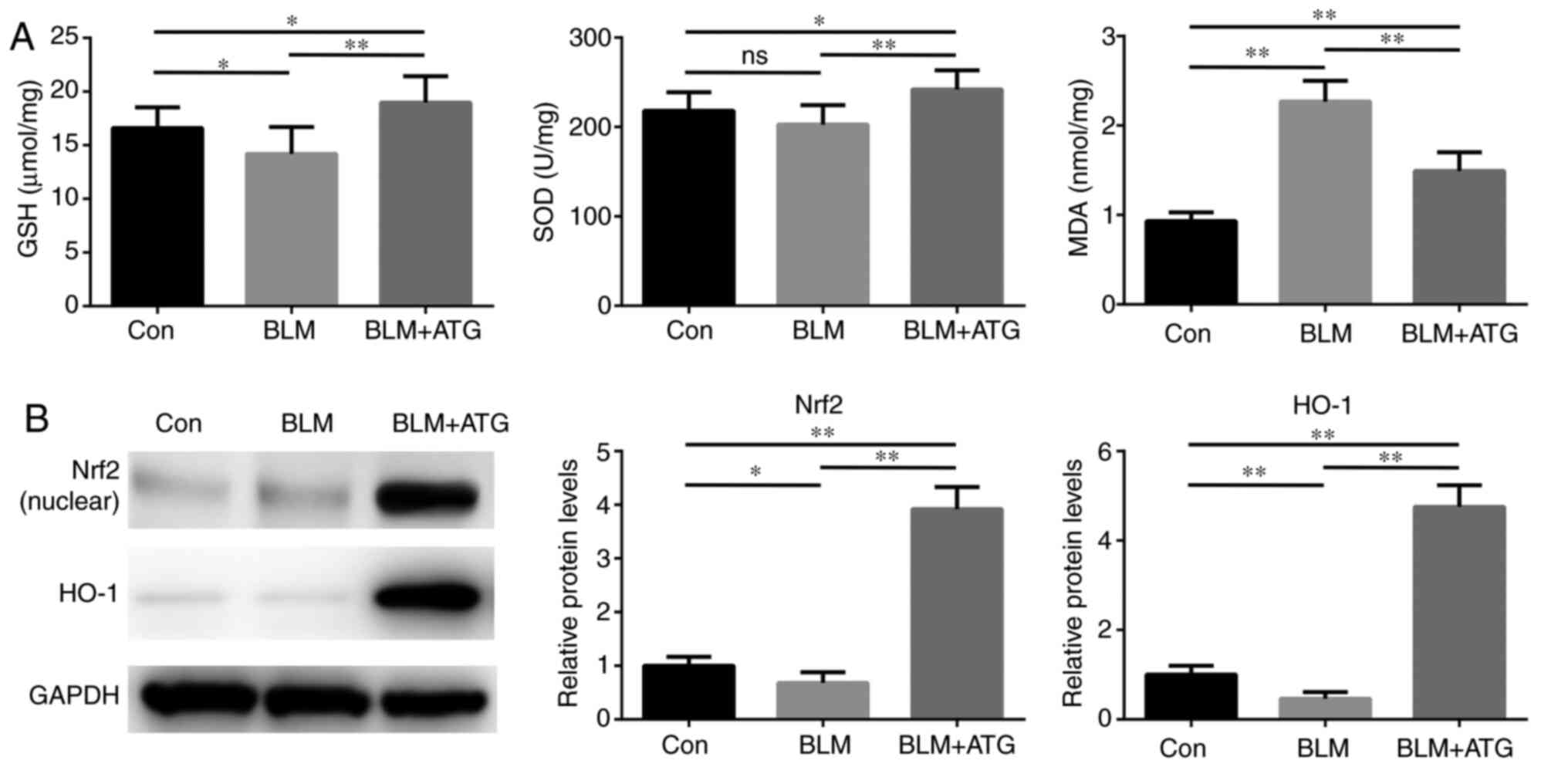|
1
|
Zhang J, Li Y, Bai X, Li Y, Shi J and Hu
D: Recent advances in hypertrophic scar. Histol Histopathol.
33:27–39. 2018.PubMed/NCBI
|
|
2
|
Niessen FB, Spauwen PH, Schalkwijk J and
Kon M: On the nature of hypertrophic scars and keloids: A review.
Plast Reconstr Surg. 104:1435–1458. 1999. View Article : Google Scholar : PubMed/NCBI
|
|
3
|
Tyack Z, Simons M, Spinks A and Wasiak J:
A systematic review of the quality of burn scar rating scales for
clinical and research use. Burns. 38:6–18. 2012. View Article : Google Scholar : PubMed/NCBI
|
|
4
|
Brown BC, McKenna SP, Siddhi K, McGrouther
DA and Bayat A: The hidden cost of skin scars: Quality of life
after skin scarring. J Plast Reconstr Aesthet Surg. 61:1049–1058.
2008. View Article : Google Scholar : PubMed/NCBI
|
|
5
|
Bloemen MC, van der Veer WM, Ulrich MM,
van Zuijlen PP, Niessen FB and Middelkoop E: Prevention and
curative management of hypertrophic scar formation. Burns.
35:463–475. 2009. View Article : Google Scholar : PubMed/NCBI
|
|
6
|
Jinnin M: Mechanisms of skin fibrosis in
systemic sclerosis. J Dermatol. 37:11–25. 2010. View Article : Google Scholar : PubMed/NCBI
|
|
7
|
Cho MK, Jang YP, Kim YC and Kim SG:
Arctigenin, a phenylpropanoid dibenzylbutyrolactone lignan,
inhibits MAP kinases and AP-1 activation via potent MKK inhibition:
The role in TNF-alpha inhibition. Int Immunopharmacol. 4:1419–1429.
2004. View Article : Google Scholar : PubMed/NCBI
|
|
8
|
Gao Q, Yang M and Zuo Z: Overview of the
anti-inflammatory effects, pharmacokinetic properties and clinical
efficacies of arctigenin and arctiin from Arctium lappa L.
Acta Pharmacol Sin. 39:787–801. 2018. View Article : Google Scholar : PubMed/NCBI
|
|
9
|
Zhong Y, Lee K, Deng Y, Ma Y, Chen Y, Li
X, Wei C, Yang S, Wang T, Wong NJ, et al: Arctigenin attenuates
diabetic kidney disease through the activation of PP2A in
podocytes. Nat Commun. 10:45232019. View Article : Google Scholar : PubMed/NCBI
|
|
10
|
Zhu Z, Yan J, Jiang W, Yao XG, Chen J,
Chen L, Li C, Hu L, Jiang H and Shen X: Arctigenin effectively
ameliorates memory impairment in Alzheimer's disease model mice
targeting both β-amyloid production and clearance. J Neurosci.
33:13138–13149. 2013. View Article : Google Scholar : PubMed/NCBI
|
|
11
|
Lee JY and Kim CJ: Arctigenin, a
phenylpropanoid dibenzylbutyrolactone lignan, inhibits type I–IV
allergic inflammation and pro-inflammatory enzymes. Arch Pharm Res.
33:947–957. 2010. View Article : Google Scholar : PubMed/NCBI
|
|
12
|
Lee JY, Cho BJ, Park TW, Park BE, Kim SJ,
Sim SS and Kim CJ: Dibenzylbutyrolactone lignans from Forsythia
koreana fruits attenuate lipopolysaccharide-induced inducible
nitric oxide synthetase and cyclooxygenase-2 expressions through
activation of nuclear factor-κb and mitogen-activated protein
kinase in RAW264.7 cells. Biol Pharm Bull. 33:1847–1853. 2010.
View Article : Google Scholar : PubMed/NCBI
|
|
13
|
Lin CY, Hsieh PL, Liao YW, Peng CY, Yu CC
and Lu MY: Arctigenin reduces myofibroblast activities in oral
submucous fibrosis by LINC00974 inhibition. Int J Mol Sci.
20:13282019. View Article : Google Scholar
|
|
14
|
Jin G, Su Y, Dong Q, Zhao X, Zhang L and
Yan X: Arctigenin alleviates TGF-β1-induced epithelial-mesenchymal
transition and PAI-1 expression via AMPK/NF-κB pathway in
peritoneal mesothelial cells. Biochem Biophys Res Commun.
520:413–419. 2019. View Article : Google Scholar : PubMed/NCBI
|
|
15
|
Li A, Zhang X, Shu M, Wu M, Wang J, Zhang
J, Wang R, Li P and Wang Y: Arctigenin suppresses renal
interstitial fibrosis in a rat model of obstructive nephropathy.
Phytomedicine. 30:28–41. 2017. View Article : Google Scholar : PubMed/NCBI
|
|
16
|
Li A, Wang J, Zhu D, Zhang X, Pan R and
Wang R: Arctigenin suppresses transforming growth factor-β1-induced
expression of monocyte chemoattractant protein-1 and the subsequent
epithelial-mesenchymal transition through reactive oxygen
species-dependent ERK/NF-κB signaling pathway in renal tubular
epithelial cells. Free Radic Res. 49:1095–1113. 2015. View Article : Google Scholar : PubMed/NCBI
|
|
17
|
Li A, Wang J, Wu M, Zhang X and Zhang H:
The inhibition of activated hepatic stellate cells proliferation by
arctigenin through G0/G1 phase cell cycle arrest: Persistent
p27(Kip1) induction by interfering with PI3K/Akt/FOXO3a signaling
pathway. Eur J Pharmacol. 747:71–87. 2015. View Article : Google Scholar : PubMed/NCBI
|
|
18
|
Dudgeon C, Shreeram S, Tanoue K, Mazur SJ,
Sayadi A, Robinson RC, Appella E and Bulavin DV: Genetic variants
and mutations of PPM1D control the response to DNA damage. Cell
Cycle. 12:2656–2664. 2013. View
Article : Google Scholar : PubMed/NCBI
|
|
19
|
Sekiguchi A, Motegi SI, Fujiwara C,
Yamazaki S, Inoue Y, Uchiyama A, Akai R, Iwawaki T and Ishikawa O:
Inhibitory effect of kaempferol on skin fibrosis in systemic
sclerosis by the suppression of oxidative stress. J Dermatol Sci.
96:8–17. 2019. View Article : Google Scholar : PubMed/NCBI
|
|
20
|
Fujiwara C, Uehara A, Sekiguchi A,
Uchiyama A, Yamazaki S, Ogino S, Yokoyama Y, Torii R, Hosoi M, Suto
C, et al: Suppressive regulation by MFG-E8 of latent transforming
growth factor β-induced fibrosis via binding to αv integrin:
Significance in the pathogenesis of fibrosis in systemic sclerosis.
Arthritis Rheumatol. 71:302–314. 2019. View Article : Google Scholar : PubMed/NCBI
|
|
21
|
Thoua NM, Derrett-Smith EC, Khan K, Dooley
A, Shi-Wen X and Denton CP: Gut fibrosis with altered colonic
contractility in a mouse model of scleroderma. Rheumatology
(Oxford). 51:1989–1998. 2012. View Article : Google Scholar : PubMed/NCBI
|
|
22
|
Livak KJ and Schmittgen TD: Analysis of
relative gene expression data using real-time quantitative PCR and
the 2(-Delta Delta C(T)) method. Methods. 25:402–408. 2001.
View Article : Google Scholar : PubMed/NCBI
|
|
23
|
Zhou CF, Yu JF, Zhang JX, Jiang T, Xu SH,
Yu QY and Zhu QX: N-acetylcysteine attenuates subcutaneous
administration of bleomycin-induced skin fibrosis and oxidative
stress in a mouse model of scleroderma. Clin Exp Dermatol.
38:403–409. 2013. View Article : Google Scholar : PubMed/NCBI
|
|
24
|
Umasuthan N, Bathige SD, Revathy KS, Lee
Y, Whang I, Choi CY, Park HC and Lee J: A manganese superoxide
dismutase (MnSOD) from Ruditapes philippinarum: Comparative
structural- and expressional-analysis with copper/zinc superoxide
dismutase (Cu/ZnSOD) and biochemical analysis of its antioxidant
activities. Fish Shellfish Immunol. 33:753–765. 2012. View Article : Google Scholar : PubMed/NCBI
|
|
25
|
Liu Q, Lu J, Lin J, Tang Y, Pu W, Shi X,
Jiang S, Liu J, Ma Y, Li Y, et al: Salvianolic acid B attenuates
experimental skin fibrosis of systemic sclerosis. Biomed
Pharmacother. 110:546–553. 2019. View Article : Google Scholar : PubMed/NCBI
|
|
26
|
Ju W, Zhihong Y, Zhiyou Z, Qin H, Dingding
W, Li S, Baowei Z, Xing W, Ying H and An H: Inhibition of alpha-SMA
by the ectodomain of FGFR2c attenuates lung fibrosis. Mol Med.
18:992–1002. 2012. View Article : Google Scholar : PubMed/NCBI
|
|
27
|
Verrecchia F, Mauviel A and Farge D:
Transforming growth factor-beta signaling through the Smad
proteins: Role in systemic sclerosis. Autoimmun Rev. 5:563–569.
2006. View Article : Google Scholar : PubMed/NCBI
|
|
28
|
Zhang J, Qiao Q, Liu M, He T, Shi J, Bai
X, Zhang Y, Li Y, Cai W, Han S, et al: IL-17 promotes scar
formation by inducing macrophage infiltration. Am J Pathol.
188:1693–1702. 2018. View Article : Google Scholar : PubMed/NCBI
|
|
29
|
Shan S, Zhang Y, Wu M, Yi B, Wang J and Li
Q: Naringenin attenuates fibroblast activation and inflammatory
response in a mechanical stretch-induced hypertrophic scar mouse
model. Mol Med Rep. 16:4643–4649. 2017. View Article : Google Scholar : PubMed/NCBI
|
|
30
|
Christmann RB and Lafyatis R: The cytokine
language of monocytes and macrophages in systemic sclerosis.
Arthritis Res Ther. 12:1462010. View
Article : Google Scholar : PubMed/NCBI
|
|
31
|
Vona R, Giovannetti A, Gambardella L,
Malorni W, Pietraforte D and Straface E: Oxidative stress in the
pathogenesis of systemic scleroderma: An overview. J Cell Mol Med.
22:3308–3314. 2018. View Article : Google Scholar : PubMed/NCBI
|
|
32
|
Shroff A, Mamalis A and Jagdeo J:
Oxidative stress and skin fibrosis. Curr Pathobiol Rep. 2:257–267.
2014. View Article : Google Scholar : PubMed/NCBI
|
|
33
|
Wu W, Peng G, Yang F, Zhang Y, Mu Z and
Han X: Sulforaphane has a therapeutic effect in an atopic
dermatitis murine model and activates the Nrf2/HO1 axis. Mol Med
Rep. 20:1761–1771. 2019.PubMed/NCBI
|
|
34
|
Kavian N, Mehlal S, Jeljeli M, Saidu NEB,
Nicco C, Cerles O, Chouzenoux S, Cauvet A, Camus C, Ait-Djoudi M,
et al: The Nrf2-antioxidant response element signaling pathway
controls fibrosis and autoimmunity in scleroderma. Front Immunol.
9:18962018. View Article : Google Scholar : PubMed/NCBI
|
|
35
|
Katz L and Baltz RH: Natural product
discovery: Past, present, and future. J Ind Microbiol Biotechnol.
43:155–176. 2016. View Article : Google Scholar : PubMed/NCBI
|
|
36
|
Atanasov AG, Waltenberger B,
Pferschy-Wenzig EM, Linder T, Wawrosch C, Uhrin P, Temml V, Wang L,
Schwaiger S, Heiss EH, et al: Discovery and resupply of
pharmacologically active plant-derived natural products: A review.
Biotechnol Adv. 33:1582–1614. 2015. View Article : Google Scholar : PubMed/NCBI
|
|
37
|
Won YD, Na MK, Kim CH, Kim JM, Cheong JH,
Ryu JI and Han MH: The frontal skull Hounsfield unit value can
predict ventricular enlargement in patients with subarachnoid
haemorrhage. Sci Rep. 8:101782018. View Article : Google Scholar : PubMed/NCBI
|
|
38
|
Liu S, Taghavi R and Leask A: Connective
tissue growth factor is induced in bleomycin-induced skin
scleroderma. J Cell Commun Signal. 4:25–30. 2010. View Article : Google Scholar : PubMed/NCBI
|
|
39
|
Chung EJ, McKay-Corkum G, Chung S, White
A, Scroggins BT, Mitchell JB, Mulligan-Kehoe MJ and Citrin D:
Truncated plasminogen activator inhibitor-1 protein protects from
pulmonary fibrosis mediated by irradiation in a murine model. Int J
Radiat Oncol Biol Phys. 94:1163–1172. 2016. View Article : Google Scholar : PubMed/NCBI
|
|
40
|
Lichtman MK, Otero-Vinas M and Falanga V:
Transforming growth factor beta (TGF-β) isoforms in wound healing
and fibrosis. Wound Repair Regen. 24:215–222. 2016. View Article : Google Scholar : PubMed/NCBI
|
|
41
|
Selvarajah B, Azuelos I, Platé M,
Guillotin D, Forty EJ, Contento G, Woodcock HV, Redding M, Taylor
A, Brunori G, et al: mTORC1 amplifies the ATF4-dependent de novo
serine-glycine pathway to supply glycine during
TGF-β1-induced collagen biosynthesis. Sci Signal.
12:eaav30482019. View Article : Google Scholar : PubMed/NCBI
|
|
42
|
Lima JDCC, Simoes E, de Castro G, Morais
MRPT, de Matos-Neto EM, Alves MJ, Pinto NI, Figueredo RG, Zorn TMT,
Felipe-Silva AS, et al: Tumour-derived transforming growth factor-β
signalling contributes to fibrosis in patients with cancer
cachexia. J Cachexia Sarcopenia Muscle. 10:1045–1059. 2019.
View Article : Google Scholar : PubMed/NCBI
|
|
43
|
Zhong L, Simard MJ and Huot J: Endothelial
microRNAs regulating the NF-κB pathway and cell adhesion molecules
during inflammation. FASEB J. 32:4070–4084. 2018. View Article : Google Scholar : PubMed/NCBI
|
|
44
|
Doridot L, Jeljeli M, Chêne C and Batteux
F: Implication of oxidative stress in the pathogenesis of systemic
sclerosis via inflammation, autoimmunity and fibrosis. Redox Biol.
25:1011222019. View Article : Google Scholar : PubMed/NCBI
|
|
45
|
Zhou CF, Zhou DC, Zhang JX, Wang F, Cha
WS, Wu CH and Zhu QX: Bleomycin-induced epithelial-mesenchymal
transition in sclerotic skin of mice: Possible role of oxidative
stress in the pathogenesis. Toxicol Appl Pharmacol. 277:250–258.
2014. View Article : Google Scholar : PubMed/NCBI
|
|
46
|
Czerska M, Mikolajewska K, Zieliński M,
Gromadzińska J and Wąsowicz W: Today's oxidative stress markers.
Med Pr. 66:393–405. 2015. View Article : Google Scholar : PubMed/NCBI
|
|
47
|
Yang HY and Lee TH: Antioxidant enzymes as
redox-based biomarkers: A brief review. BMB Rep. 48:200–208. 2015.
View Article : Google Scholar : PubMed/NCBI
|
|
48
|
Liu Z, Wang J, Huang E, Gao S, Li H, Lu J,
Tian K, Little PJ, Shen X, Xu S and Liu P: Tanshinone IIA
suppresses cholesterol accumulation in human macrophages: Role of
heme oxygenase-1. J Lipid Res. 55:201–213. 2014. View Article : Google Scholar : PubMed/NCBI
|















